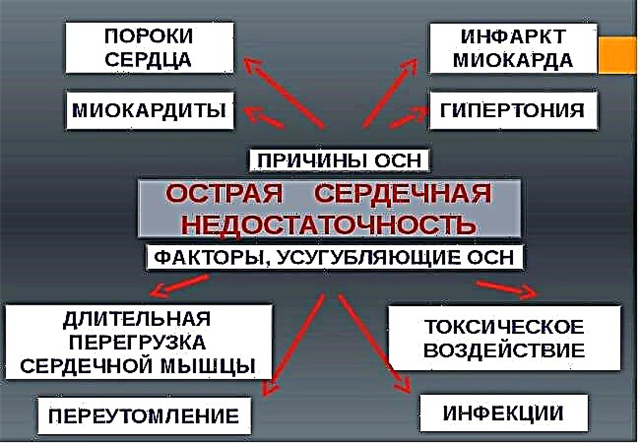The development of colds leads to the appearance of such unpleasant symptoms as a runny nose, headaches, sore throat, watery eyes, etc. Their appearance is caused by inflammation of the nasopharyngeal mucosa and paranasal sinuses. What to do if your eyes are watery with a runny nose? First of all, you need to establish the root cause that provoked lacrimation and rhinitis. As a rule, inflammation in the nasal cavity leads to swelling of the nasolacrimal canal, as a result of which the outflow of fluid from the lacrimal sac is impaired. That is why many people with a cold are worried about not only a runny nose, but also profuse lacrimation. In addition, the eyes can also watery due to the development of allergic or infectious conjunctivitis, which often accompanies ARVI.
Causes of a runny nose and lacrimation
 What to do if a runny nose, watery eyes and sneezing appear? The principles of treatment are entirely determined by the cause of the development of pathological processes. Most often, rhinitis occurs when the nasal mucosa is affected by pathogenic viruses, in particular adenoviruses and rhinoviruses. Due to the rapid spread of infection and soft tissue edema, increased production (production) of tear fluid is observed.
What to do if a runny nose, watery eyes and sneezing appear? The principles of treatment are entirely determined by the cause of the development of pathological processes. Most often, rhinitis occurs when the nasal mucosa is affected by pathogenic viruses, in particular adenoviruses and rhinoviruses. Due to the rapid spread of infection and soft tissue edema, increased production (production) of tear fluid is observed.
In addition, tearfulness and severe runny nose accompany not only colds, but also such diseases as:
- sinusitis;
- allergic rhinitis;
- conjunctivitis (infectious, allergic);
- allergic rhinoconjunctivitis (hay fever).
With the formation of foci of inflammation in the paranasal sinuses and directly in the nasal cavity, the mucous membranes swell strongly. That is why there is a narrowing of the internal lumen of the lacrimal canals and, as a result, lacrimation. Hypothermia, a lack of vitamins in the body, iron deficiency anemia, inappropriate intake of hormonal agents, as well as an unbalanced diet can provoke the development of infection in the respiratory organs.
Medication for the common cold
The common cold is one of the most common causes of sneezing and severe runny nose. Untimely relief of inflammatory reactions is fraught with damage to the nasolacrimal canal and, as a result, lacrimation. SARS, which include the common cold, are treated with antiviral agents. With their help, you can quickly eliminate lesions in the nasal cavity and undesirable manifestations of the disease within a few days.
A common cold can cause the development of ethmoiditis, sinusitis, pneumonia and even pyelonephritis.
According to statistics, about 45% of patients suffer colds "on their feet", as a result of which they often have complications. The viral infection progresses rapidly and eventually invades the paranasal sinuses, causing more serious illness. Therefore, when the first signs of ARVI appear, which include chills, high fever and rhinitis, the following types of drugs should be used:
- "Amiksin" - destroys most of the virions that provoke the development of influenza, SARS and urethrogenital infections;
- "Kagocel" - suppresses the activity of pathogenic viruses, in particular herpes viruses, as a result of which the severity of inflammation in the nasal cavity decreases;
- "Groprinosin" - stimulates the activity of protective cells, increases specific immunity and helps to destroy rhinovirus infections;
- "Tamiflu" - interferes with the synthesis of viral RNA, as a result of which the number of virions in the foci of inflammation is significantly reduced;
- "Arbidol" - stimulates the activity of T-lymphocytes, increases local immunity and prevents the development of most viruses that provoke ARVI.
Only the attending physician can correctly draw up a treatment regimen after examining the patient. If within 2-3 days the patient's condition does not improve, the specialist changes the treatment tactics and replaces the previously prescribed medications with more effective ones.
Preparations for the common cold
What to do if a runny nose does not go away for a long time? To facilitate nasal breathing, many patients use vasoconstrictor drops. But one must take into account the fact that they provide only temporary relief of symptoms. The composition of drugs does not include components that destroy infectious agents. That is why a runny nose with a cold can bother 7 or more days.
What is the right way to treat rhinitis? The first step is to determine the cause of its occurrence. A runny nose can be infectious, allergic, vasomotor, or chronic. Depending on the etiology of the disease, the following types of nasal agents can be used to facilitate nasal breathing and eliminate inflammation in the mucous membrane:
- moisturizers ("Marimer", "Salin") - cleanse the nasal canals from mucous accumulations and help moisturize the ciliated epithelium;
- vasoconstrictor ("Tizin", "Galazolin") - contribute to the narrowing of blood vessels and reduce swelling of the nasal passages;
- antiallergic ("Orinol", "Rinofluimucil") - reduce the sensitivity of histamine receptors, thereby reducing the severity of allergic manifestations in the nasal mucosa;
- antimicrobial ("Bactroban", "Framacetin") - destroy microbial cells and accelerate the regression of inflammation in the nasal passages;
- hormonal ("Beconase", "Fliksonase") - reduce swelling and inflammation in the nasal mucosa;
- antiviral ("Kipferon", "Gripferon") - stimulate the synthesis of interferon, which suppresses the activity of the viral flora.
If a runny nose does not go away within 14 days, and a high fever and headaches join the symptoms of the disease, this may indicate the development of bacterial sinusitis.
To speed up the healing process, it is advisable to use drugs for washing the nasopharynx. Physiomer, Aqualor and Aqua Maris have a pronounced decongestant and wound healing effect. As a rule, when the normal patency of the nasal passages and the nasolacrimal canal is restored, the eyes stop watering, and the runny nose completely disappears.
Folk remedies for the common cold
A runny nose is one of the most unpleasant manifestations of ARVI, which leads to a significant deterioration in well-being. Irritation of the skin near the nasal openings, lacrimation and sneezing is a consequence of inflammation of the mucous membrane in the nasal cavity. You can eliminate pathological symptoms and alleviate the condition with the help of folk remedies.
 Traditional medicine offers several simple but effective remedies to help eliminate a severe cold:
Traditional medicine offers several simple but effective remedies to help eliminate a severe cold:
- thuja oil: instill 2 potassium of warmed oil into each nasal passage 3-4 times a day;
- beet juice: instill 3 drops of freshly squeezed juice in the nose at least 3 times a day;
- lemon juice: dilute lemon juice with water in a 1: 1 ratio; instill 2 drops of the solution into the nose 3-4 times a day.
To reduce irritation in the nose, you can lubricate the nasal openings with menthol oil. It is anti-inflammatory and soothing, so it helps to prevent excessive accumulation of mucus in the nasopharynx.
Conjunctivitis drugs
One watery eye is a clear sign of the development of unilateral conjunctivitis. Viruses, allergens or bacteria can provoke inflammation of the lacrimal sac. If watery eyes are accompanied by severe itching, burning, and redness of the eyes, you are most likely experiencing allergic conjunctivitis. In cases where pus begins to accumulate in the corners of the eyes, the bacterial form of the disease is diagnosed.
What to do with conjunctivitis? The principles of treatment are determined by the nature of the infectious agent.Viral forms of conjunctivitis are treated with antiviral eye drops, bacterial - with antibiotics, and allergic - with antihistamines:
| Drug type | Application features | Name of the drug |
|---|---|---|
| antimicrobial | "Albucid"; "Tobrex"; "Vigamox" | eliminate purulent inflammation in the lacrimal sacs, redness of the eyes and dry mucous membranes |
| antiviral | Oftalmoferon; Lokferon; Dexamethasone | destroy the viral head start and catarrhal (non-purulent) inflammation in the cornea of the eyes |
| antiallergic | "Lacrisifin"; "Kortiszon" | reduce the severity of itching and burning, relieve irritation and inflammation |
As a rule, timely treatment of conjunctivitis allows you to eliminate tearing within 2-3 days.
However, irrational use of drugs and poor hygiene can cause very serious complications - loss of vision, abscess of the lacrimal sac, keratitis, etc.



